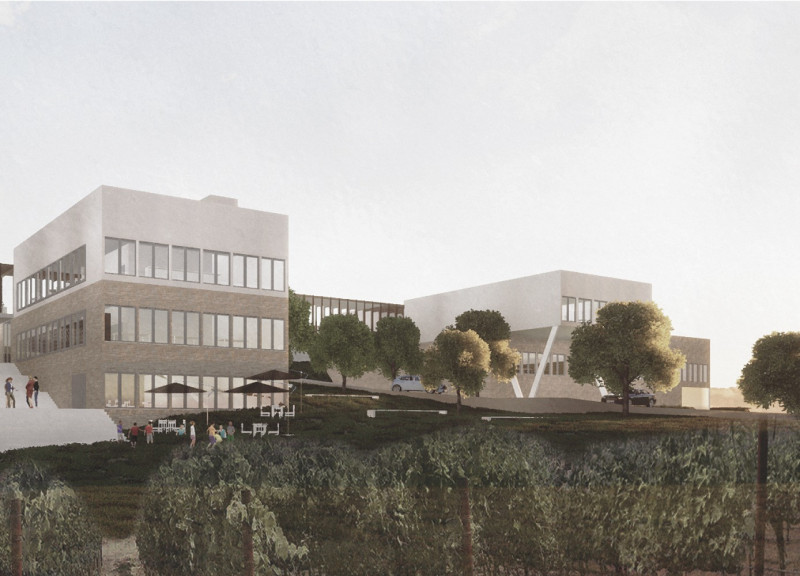5 key facts about this project
At its core, the project represents a forward-thinking vision of urban living, where social interaction is seamlessly integrated with thoughtful design. The architectural language is characterized by a modern yet warm aesthetic, employing a combination of natural materials and cutting-edge technologies to enhance both comfort and sustainability. The structure embodies the principles of biophilic design, focusing on the connection between the inhabitants and nature, whether through the incorporation of ample green spaces, natural light, or the careful selection of materials that echo the surrounding landscape.
The design incorporates a variety of spaces tailored to different functions, including flexible meeting rooms, recreational areas, and open communal spaces. These spaces are purposefully designed to foster interaction among users, creating an inviting atmosphere conducive to collaboration and socialization. The layout reflects a careful consideration of movement and flow, with pathways that encourage exploration and ease of access between various functional areas.
Materiality plays a significant role in this architectural project. A diverse palette of materials has been employed, including locally-sourced timber, sustainable concrete, and glass, which collectively contribute to the project's visual identity and structural integrity. The use of timber not only adds warmth to the design but also supports sustainability goals, as it is a renewable resource that reduces the carbon footprint of the build. The expansive glass facades invite the outdoors in and enable natural light to permeate the interior spaces, enhancing the overall user experience and reducing reliance on artificial lighting during the day.
A notable feature of this project is its integration with the landscape. The design skillfully incorporates outdoor spaces, such as gardens and terraces, which not only serve as extensions of the indoor environment but also promote ecological diversity within the urban fabric. The landscape design has been carefully curated to reflect local flora, enhancing the ecological value of the site while providing peaceful retreats for users.
The project also embraces cutting-edge technologies to improve efficiency and sustainability. Incorporating renewable energy solutions, such as solar panels, the design not only minimizes its environmental impact but also provides an educational platform for the community to learn about sustainable practices. This multifaceted approach not only enriches the architecture but also reinforces the project’s role as a catalyst for environmental consciousness within the community.
The unique design approaches utilized in the project exemplify a marriage of artistry and pragmatism, reflecting contemporary architectural trends while ensuring that the needs of the users remain at the forefront. By prioritizing flexibility, sustainability, and aesthetics, this architectural endeavor sets a precedent for future projects within the region, showcasing how thoughtful design can serve both people and the environment.
Readers interested in further exploring the intricacies of this architectural project are encouraged to review elements such as architectural plans, architectural sections, architectural designs, and architectural ideas. These details provide a deeper understanding of how the project not only meets functional requirements but also contributes to creating a vibrant community space that embodies the principles of modern architecture.


























